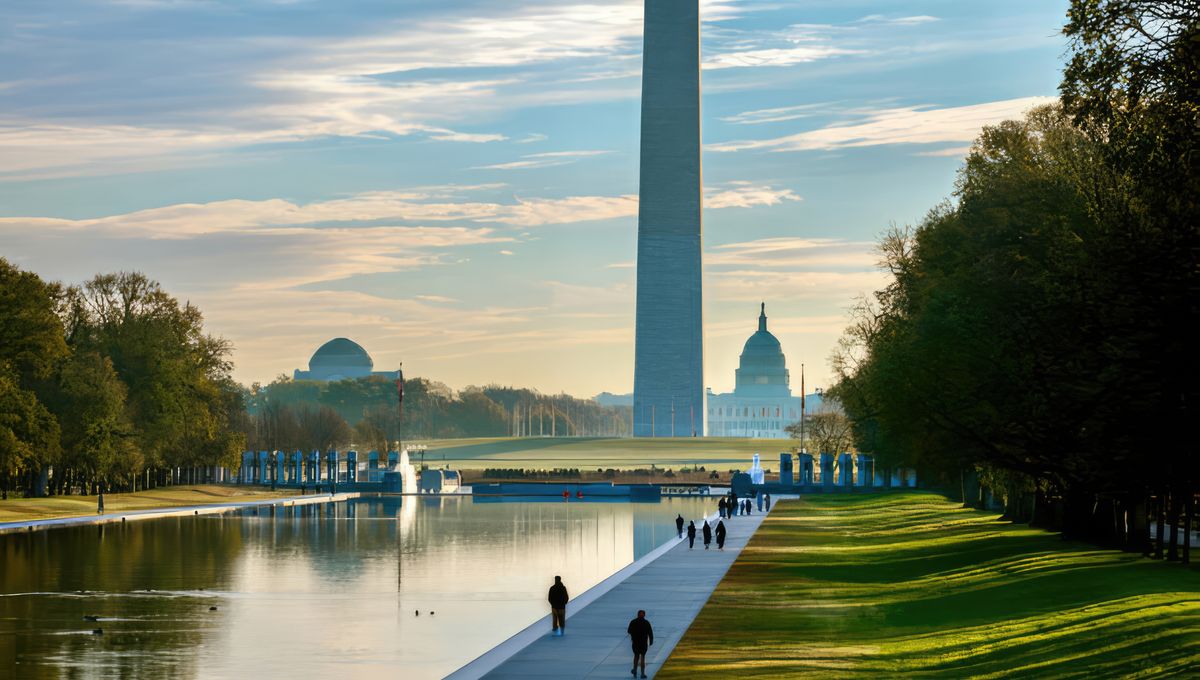
Washington DC may be the heart of US politics today, but it wasn’t always destined to be the nation’s capital. In fact, there were moments in history when other cities held that prestigious title. So, how did we arrive at today’s capital, and why wasn’t it always a certainty?
During the Revolutionary War – a time when the US had declared independence but had not yet written its founding Constitution – the fledgling nation had several temporary capitals, primarily in Pennsylvania.
New York then became the national capital between 1785 to 1790, including 16 months after the Constitution was ratified in 1788. George Washington was sworn in as the first President in 1789 on the balcony of Federal Hall on Wall Street and this is where the Continental Congress (and later the Congress) met to decide measures for the new-born nation.
However, the Big Apple was only intended as a temporary capital. Within the Constitution, it stated that Congress must choose an area to become the nation’s capital. During this interluding period of debate, Congressman John Francis Mercer of Maryland commented that Congress was “always more anxious about where we shall sit, than what we shall do.”
Indeed, the placement of the capital city was an important issue. The location had to appear independent and representative of the whole country – which wasn’t an easy feat. Many were keen to keep the capital in New York or move it to Philadelphia since these were important economic and commercial hubs, but others felt these cities didn’t represent the interests of the South, which was more rural and focused on agriculture.
Likewise, the capital city had to be geographically central to the country and equally accessible to all. Some northerners also suggested that Pennsylvania would be a good option, given its role in the nation’s founding, but the Southerners were not convinced. It’s said that these arguments about the capital city “foreshadowed the North-South conflicts” that came to a head in the American Civil War.
The disagreements were temporarily soothed by the Compromise of 1790, in which the North and South resolved conflicts about state debts wracked up during the Revolutionary War.
It also addressed the question of the capital, establishing that a new city would be founded along the Potomac River between West Virginia and Maryland, creating a settlement that would eventually become Washington DC. Placed almost halfway down the East Coast, it appeared to be a good location to maintain Northern dominance while appeasing Southern pressure.
However, the city still had to be built. In the meantime, between 1790 and 1800, the federal government was placed in Philadelphia, making it an official interim capital city.
Finally, by 1800, the federal government moved to the District of Columbia, and Washington DC fulfilled its promise to become the capital city of the US. The White House was completed in November 1800 and has served as the residence of every US president since.
A few small fractions of society still argue that the US capital needs reconsidering. Some contend that a “new master-planned smart city” should be established as the capital in the dead-center of the contiguous US, such as Kansas.
For now, however, Washington DC stands firmly as the political heart of the US.
Source Link: Why The USA Almost Had A Different Capital City